Bamboo is famous for being one of the strongest, hardiest and fastest-growing plants on earth. But that doesn’t mean it’s impervious to problems. As any gardener knows, even the easiest plants can encounter unexpected obstacles, and maintaining a consistently healthy garden is hardly a no-brainer.
NOTE: This article first appeared in November 2020, most recently updated in April 2024.
Growing healthy bamboo can be fun and rewarding, and not particularly difficult. But even a green-thumbed gardener can run into occasional challenges with their bamboo. It’s not uncommon for leaves to discolor, turn yellow or brown, or fall from the plant completely. In some cases, you might have pests, including anything from a vole to an aphid colony harassing your plants. Or maybe your bamboo is simply languishing, failing to produce impressive shoots and attractive foliage.

In the following article, we’ll cover 7 troubleshooting tips to help you grow healthy bamboo, easily and successfully. We’ll look at the most common issues people have with their bamboo plants, and we’ll tell you how to address them.
If you’re growing Lucky Bamboo, one of those cute, decorative arrangements with a few stalks growing directly in a vase of water, then this article is not for you. Instead, check out our article about Lucky Bamboo, which is actually not a true bamboo, and it’s not even a member of the grass family. But it is lucky, so we won’t discourage you from growing it.
Also, if you have the problem that your bamboo is too healthy, and it’s taking over your garden, you are not alone. Many varieties of running bamboo have the potential to become invasive, but this is not the page for you. Instead, check out one of our comprehensive articles about How to contain bamboo or How to get rid of bamboo.
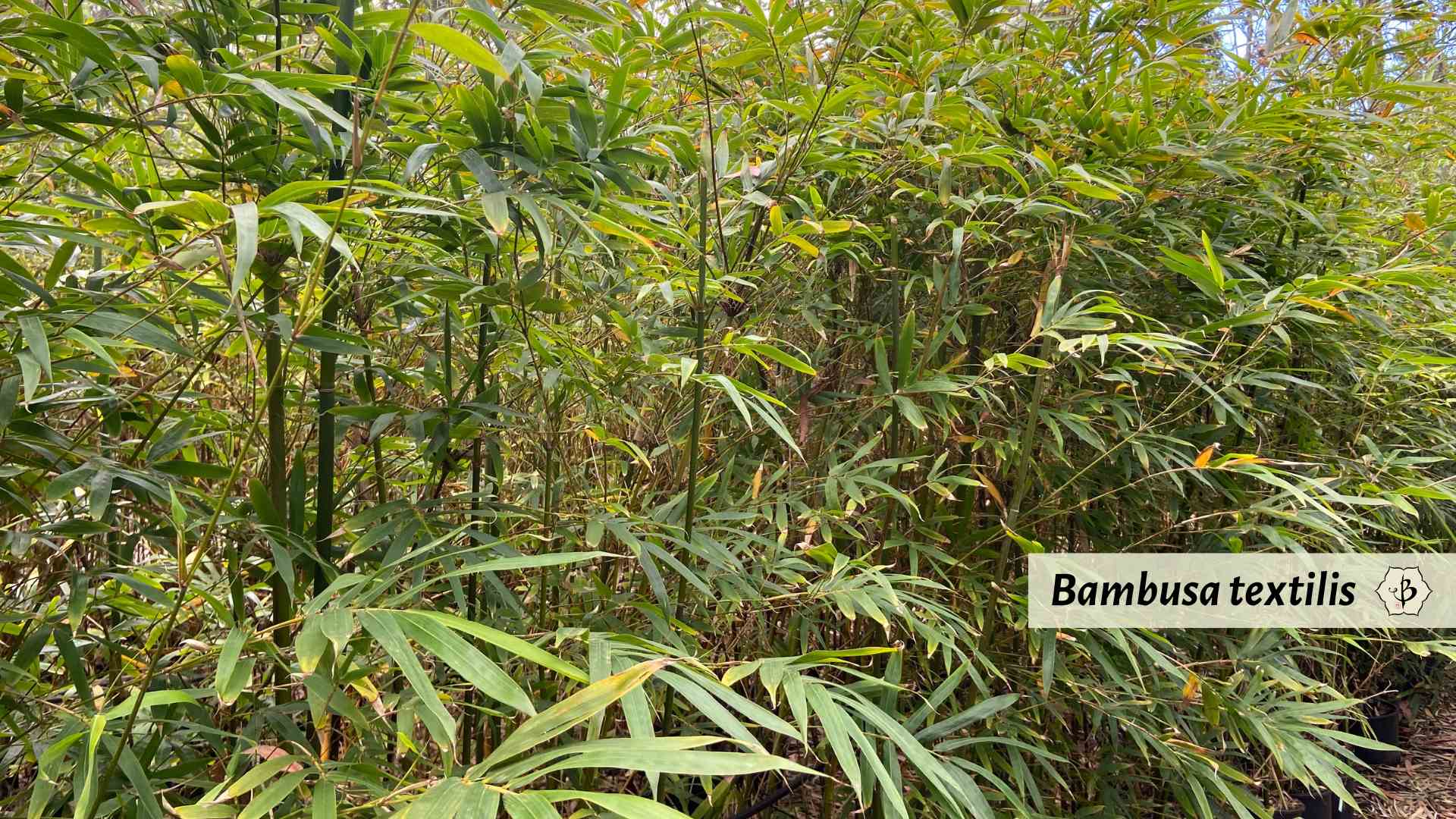
Most common problems with bamboo
Apart from having bamboo grow out of control and take over the garden, which seems to be the greatest concern people have with bamboo, there are a handful of common issues that gardeners run into. Most of these problems are fairly easy to resolve, although they are not necessarily easy to diagnose.
In the chart below, we can see the most common symptoms of an unhealthy bamboo. We also see that the cause of the symptom is not always certain. But we can usually narrow it down to 2 or 3 factors. Then we can troubleshoot and look at several tips for dealing with the problems, relieving the symptoms, and making your bamboo healthy again.
| Unhealthy bamboo symptom | Possible cause of the symptom |
| Leaves are losing their vibrant green color and turning yellow. | Unhealthy leaves can mean a lot of things, and are one of the harder issues to diagnose. This could be the result of over-watering, under-watering, or a simple nutrient deficiency. In some species, it could be caused by too much direct sunlight. |
| Leaves are turning brown on the tips. | The bamboo is probably not getting enough water or enough nutrients. |
| Leaves are dropping. | Again, this could be from too much water or from not enough. It might also be a sign that it needs nutrients. If it’s a potted bamboo, it may be rootbound. On the other hand, it might just be a seasonal thing. Bamboo generally loses leaves in the spring rather than the fall, just before the new growth happens. |
| Leaves are curling. | This is probably a sign of under-watering, but it could be overwatering. If the leaves curl during the day and then flatten out again as the sun drops, then the plant is probably getting too much direct sunlight. |
| Foliage just isn’t as full and lush as it used to be. | Most likely a nutrient deficiency, and the plant just needs to be fed or fertilized. It could also be from too much or too little water. If the bamboo is in a container, it could be time to repot it. |
| The leaves are sticky and sometimes black. | This is probably a sign of aphids. A nasty pest that’s difficult to remove, but can be controlled. |
| New shoots and lower culms are getting damaged. | Animals, frequently rodents, like to chew on bamboo shoots and stalks. They’re not going to kill your bamboo, but a house cat can help keep them away. |
| Mushrooms are growing around the base of the bamboo culms. | This could be another symptom of overwatering. But mushrooms around your bamboo grove can also be a good sign of soil health. |
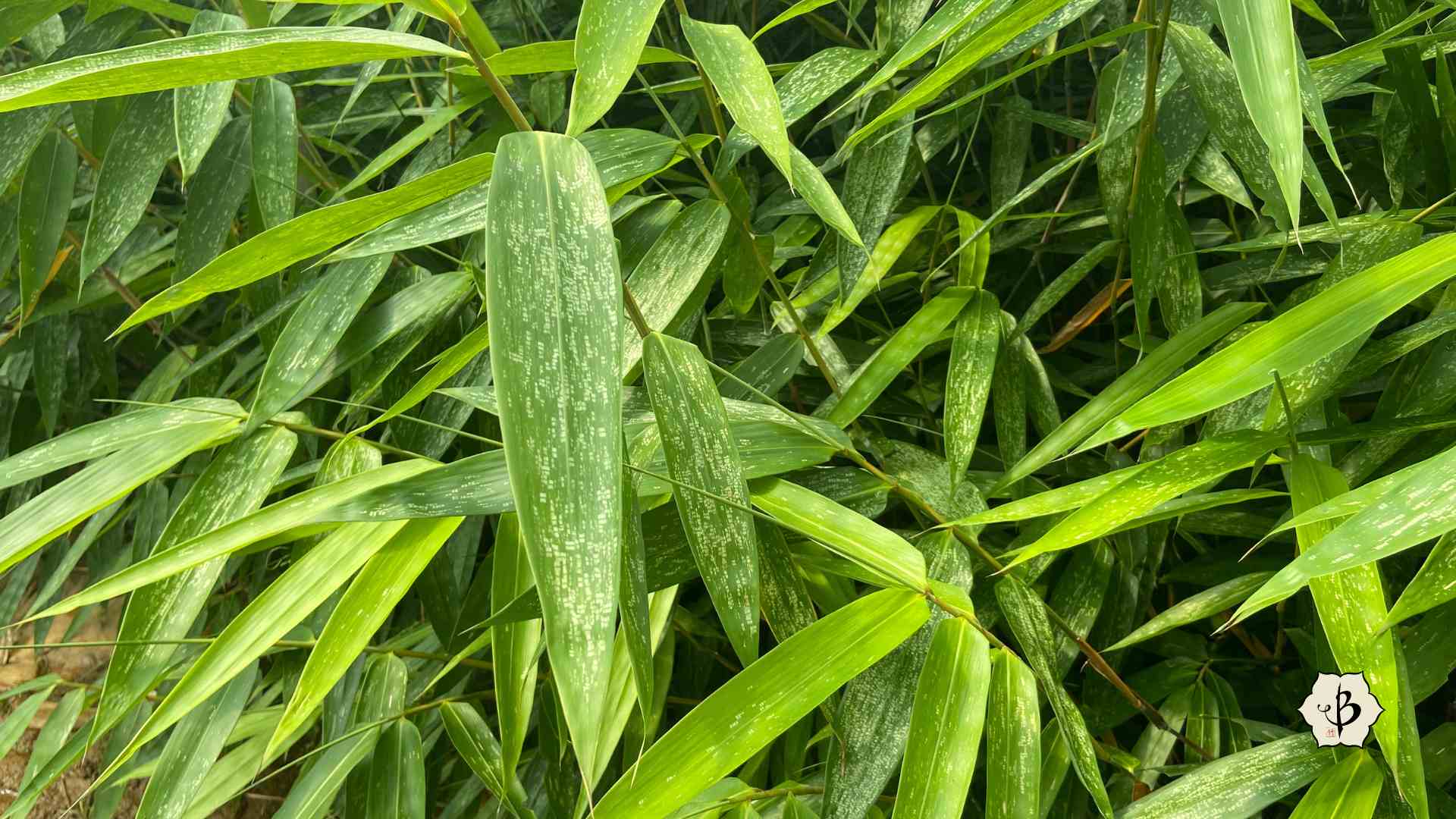
Best tips for growing healthy bamboo
As you can see in the chart above, it’s difficult to be sure what is causing an unhealthy symptom with your bamboo. But we can almost always narrow it down to 3 or 4 issues. So here are 7 pointers to help get your bamboo back on track.
1. Water less
Bamboo likes to stay pretty moist, but over-watering is actually the most common issue. Bamboo needs good drainage and will not do well in standing water or saturated soil. Too much water can lead to root rot and a variety of unhealthy signs in the leaves. Try poking your finger around in the soil to see how wet it is. Then cut back to watering just once a week. Or you can stop watering until you see the leaves begin to curl.
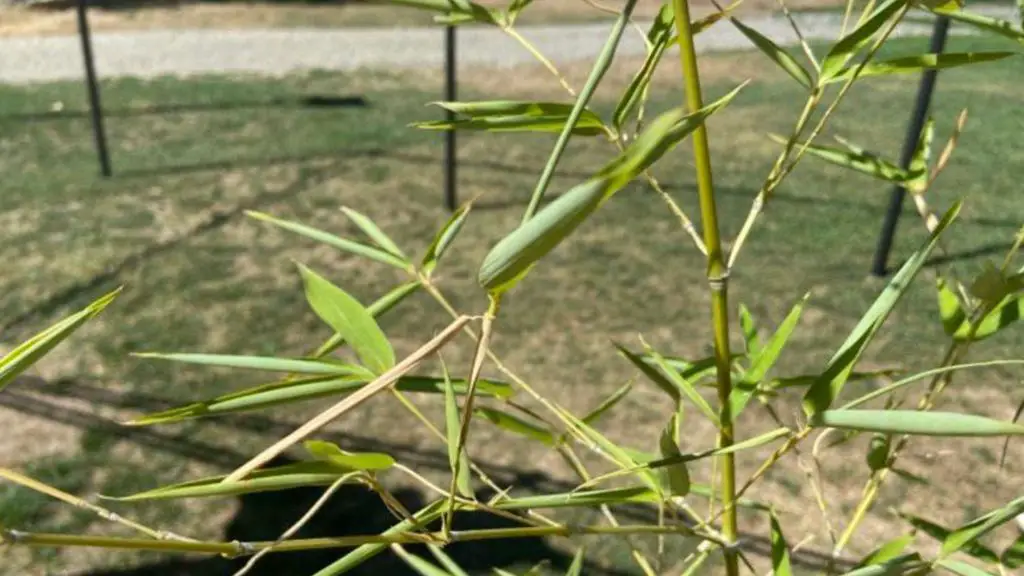
2. Water more
It’s a tricky thing, but the second biggest challenge to growing healthy bamboo is probably under-watering. The most common symptom of this is curled leaves. If that’s the only symptom, then it probably needs more water. Usually once or twice a week is good, but if it’s especially hot and or windy, then it will need more. Potted bamboo also needs more frequent watering.
3. Fertilize
Bamboo likes to be fed, and it wants a diet fairly rich in nitrogen. For best results, we recommend organic compost or manure. Be careful that the manure is not too fresh, as this could be too strong, and may lead to browning of the leaf tips. Fertilizing twice a year is usually best, at the beginning of spring and again in mid or late summer.
Good organic fertilizer keeps the soil healthy, and that’s actually one of the best ways to deter pests. Insects can sense when a plant is weak and vulnerable, and they will take advantage of those languishing specimens.
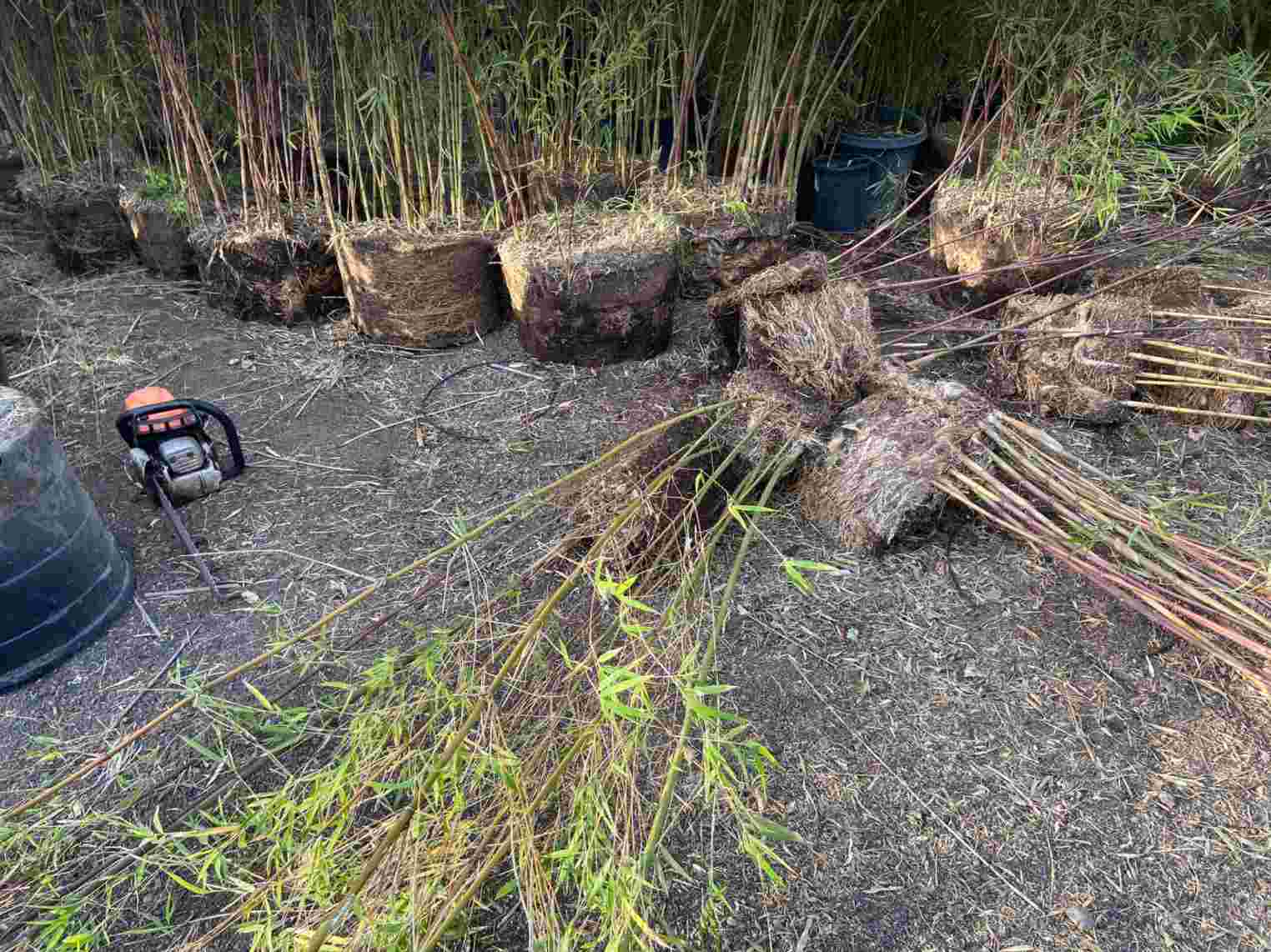
4. Transplant or repot
Growing healthy bamboo in a pot or a container can be difficult. The plants have a tendency to get root bound. When this happens, it’s hard for the roots to get water, and the health of the whole plant suffers. The only times I’ve had issues with aphids on my bamboo were with potted plants. As mentioned above, the bugs recognize an unhealthy plant as easier prey, and they’ll zero in on it.
Check the roots of your potted bamboo a couple times a year, and try to repot it or divide the root ball before it gets root-bound. This is also a great way to propagate more bamboo.
5. Provide more shade
Many varieties of bamboo, especially montane species and dwarf varieties prefer a little less sunlight. Chimonobambusas and dwarf bamboos of genus Sasa and genus Pleioblastus, for example, do far better with at least some partial shade. Check out our in-depth article on Growing bamboo in the shade.
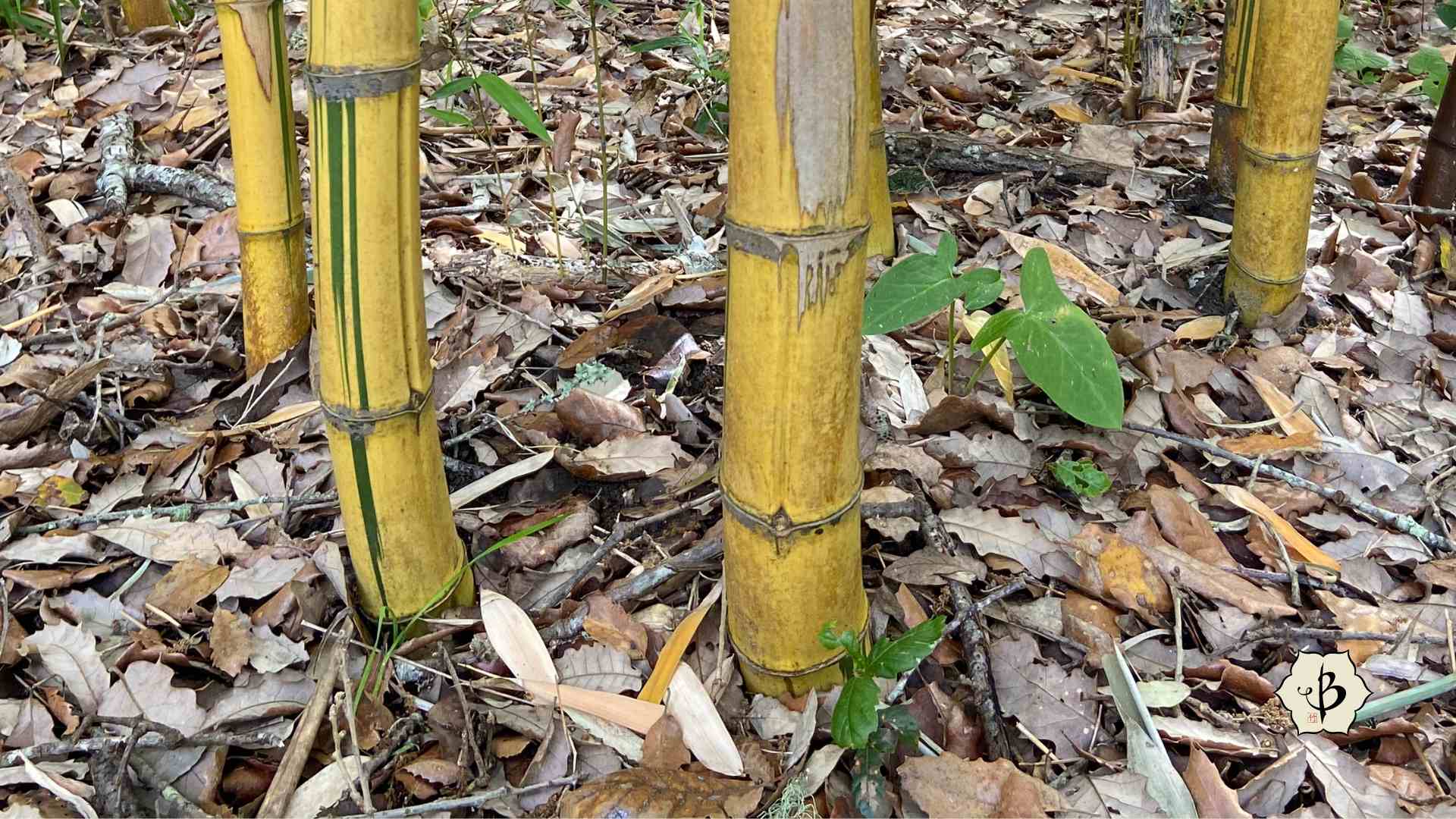
6. Mulching
Mulching is always beneficial for bamboo. It’s a great way to help the roots retain moisture in the summer, and to stay warm in the winter. Just be mindful to poke around in the mulch once in a while. Make sure it’s not getting soggy underneath. It can be easy to see dry mulch on top and not realize that the soil below is saturated. Rodents might also enjoy burrowing into a thick bed of mulch, so it’s a good idea to move it around with a rake once in a while.

7. Pruning
Sometimes all your plant needs is a little pruning. If you have an old stand of bamboo and it doesn’t look as stunning as it once did, try going in with a small handsaw and cutting out some of the older canes. Look for ones that have cracks or have lost their colorful luster. Cut them as close to the ground as possible. Remove some of the older, listless branches while you’re at it. This not only improves the plant’s appearance, but it also helps to concentrate the energy in the healthy parts of the bamboo, encouraging vibrant, new growth.

Further reading
If you enjoyed these troubleshooting tips for growing healthy bamboo, please consider sharing the blog post or subscribing to our mailing list. You might also be interested in some of the following articles:
- Growing bamboo: A how-to guide
- Bamboo pests
- Watering bamboo
- Fertilizing bamboo
- Bamboo anatomy
- Bamboo flowering
- Best cold hardy bamboos for snowy climates
- Growing bamboo indoors
- Bamboo and carbon sequestration
FEATURED PHOTO: Healthy bamboo in the sunlight. Photo by Fred Hornaday.


























My bamboo has green at the soil but its growth has turned white after winter, it looks dead . Do I need to cut odff the white
Yes, cut the dead culms all the way back, as close to the ground as possible.
In spring while my bamboo is growing rapidly, many of the shoots make a bend and they fall over and are done growing. And I cannot figure out why.?? Anyone have any ideas.
Hi Allan, That’s strange. Soggy water-logged soil is the most common culprit. Hopefully there are no Bamboo Haters in your neighborhood; they can also be a problem. I always recommend a bit of manure or organic compost to help fortify the soil.